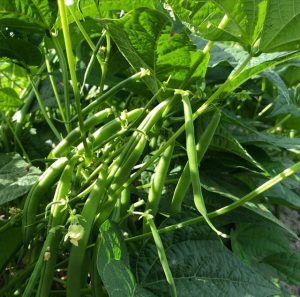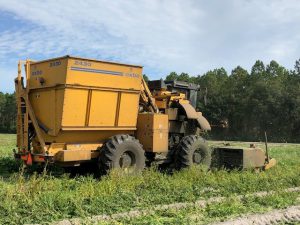
The latest FDACS statistics ranks snapbeans as #7 in the state for value of production.
St. Johns County is known for potatoes, cabbage and sod, primarily, in the world of agriculture. Vegetables of Asian origins (longbeans, bitter melon, luffas) has been a growing commodity over the years, and more recently, snapbeans. Planted in the late summer, this legume is harvested just in time for Thanksgiving. Examples of other legumes include edamame, lima beans, and snowpeas.
Directly seeded into the soil, every row is elevated to help improve drainage on these fields with seepage irrigation. Also known as bush beans, as the name implies, are a bushy plant without the need for trellising or support. Seeds are planted 2-4″ apart, depending on the variety.
This crop has a quick turnaround time of ~60 days. That is half the time of potatoes, with little opportunity for error.
For gardeners, we hand pick our beans. In commercial operations, farmers use mechanical harvesters such as the Oxbo. The large equipment has a gentle, rolling brush (or picking reel) that detaches the bean pod, and leaves the bush behind. Harvesters can make several field passes before needing to dump their carts.

When I started working as the Ag Agent for St. Johns County in spring of 2019, there was roughly 500 acres of snapbeans. In the fall of 2022, we are approaching 900 acres. The farmers are proud that their beans will be sold fresh – never canned and end up in our grocery store chains. Locally, Ben Wells Produce provides snapbeans to the local farmer’s market in the weeks approaching Thanksgiving.
Farming during Florida hurricane season is a huge risk. We all just learned that fact with Ian, which damaged several snapbean fields. When you see a farmer, think of their contributions and maybe show some appreciation for making fresh beans part of our holidays!
 1
1
